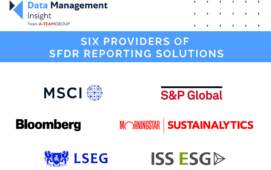Thomson Reuters is taking a step toward answering client calls for more open access to its Reuters Instrument Code (RIC) symbology. The company is making RICs available for use with non-real-time information in client and non-client financial institutions’ trade processing systems.
Enterprise content chief Gerry Buggy, part of the team responsible for Thomson Reuters’ response to the EC anti-competition complaint, the new facility is the “first step in supporting the financial community’s symbology needs across all parts of the trading life cycle through our evolving symbology services.”
The move comes in the wake of the EC investigation and subsequent complaint into the use of RICs in real-time consolidated data feeds. In response to that complaint, many financial services practitioners have called for more open access to the RIC, which is entrenched in many firms front-, middle- and back-office trading and trade processing systems.
According to Jason du Preez, head of symbology at Thomson Reuters, the latest initiative “has nothing to do with the EC investigation. The EC is focused on use of RICs for accessing real-time information, while the new licences are focused at firms looking to trade with the RIC or use the RIC to access non-real-time information.”
Du Preez says that latest move means that “any market participant can buy a license that will allow them to trade using the RIC. This will allow the use of the RIC for pre- and post-trade activities, and the right to redistribute RICS in this regard.”
The new RICs arrangement will allow market participants to use and cross-reference the RIC symbol for trade activities. As such, it can be used to facilitate the advertisement of liquidity, acceptance of trade flow and execution of post trade activities with the RIC symbol as a consistent identifier throughout the process.
Additionally, the service will allow Thomson Reuters pricing and reference data customers to use RICs to reference and retrieve securities data from their securities master databases and navigate to connected content such as legal entity identifier (LEI) information.
Du Preez says that “Firms that purchase reference data from Thomson Reuters will also be granted the right to use the RIC to access any non-real-time information, essentially allowing them to use the RIC to access any content, including third-party party content, held in their securities master databases.”
Thomson Reuters believes the new service will encourage more efficient and reliable capital markets by giving market participants the freedom to use RICs symbols irrespective of whether they use Thomson Reuters enterprise data products.
As part of the latest initiative, the Bats Chi-X Europe exchange has signed up for the service, which will allow it to deploy RICs in the post-trade services it offers.
According to Paul O’Donnell, COO at BATS Chi-X Europe, “Cross-referencing the BATS Chi-X Europe instrument codes with the Thomson Reuters RIC symbols will enable us to reach new market participants as well as improve efficiency and data transparency by facilitating accurate identification of securities on our platform.”
Du Preez says obvious candidates for adopting the new arrangement include “trade hubs, third-party trade/post-trade processing firms or anyone that wants to send, receive or cross reference messages that contain securities identified with a RIC.”
Subscribe to our newsletter




